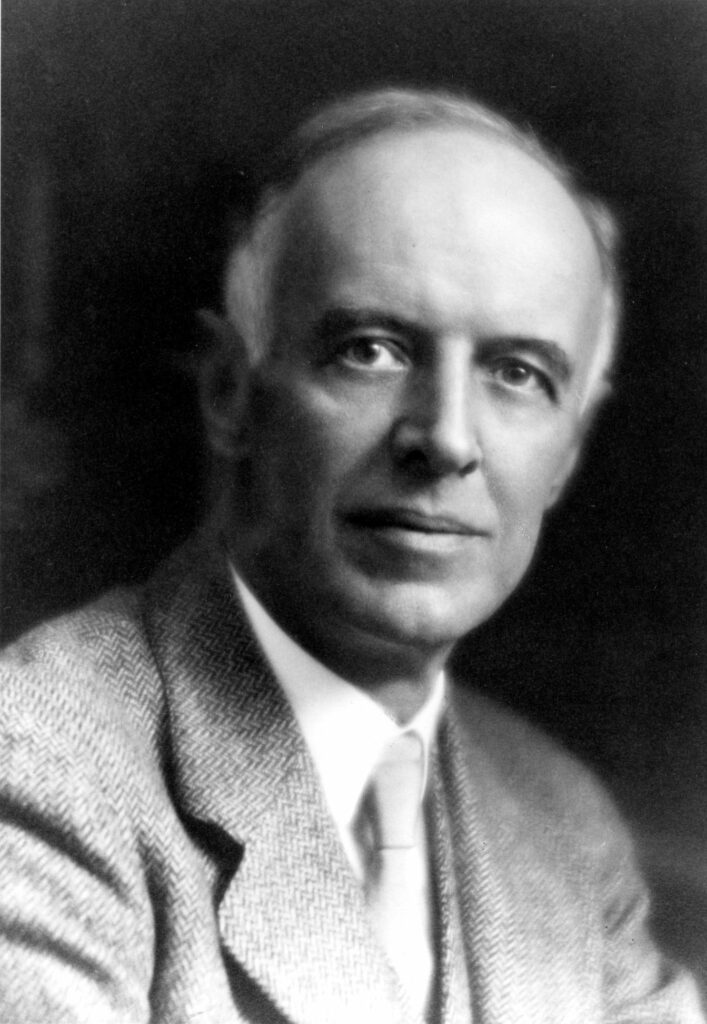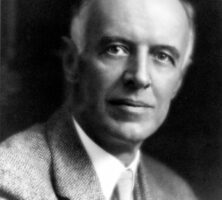Ulrich Bonnell Phillips was the first major historian of the South and of southern slavery, and his work has attracted as much attention and generated as much controversy as that of any southern historian.
Phillips was born in LaGrange on November 4, 1877, to Jessie Young and Alonzo Rabun Phillips. His father, a merchant, was of yeoman stock, but his mother, whom Phillips considered his foremost inspiration, had a plantation background.
Phillips attended Tulane Preparatory School in New Orleans, Louisiana, before entering the University of Georgia, where he earned a bachelor’s degree in 1897 and a master’s degree in 1899. He attended the 1898 summer term at the University of Chicago, studying with historian Frederick Jackson Turner. Phillips received his doctorate in 1902 from Columbia University in New York, working under the historian William A. Dunning. His dissertation, “Georgia and State Rights,” won the Justin Winsor Prize and was published by the American Historical Association. From 1902 to 1908 Phillips taught at the University of Wisconsin and published widely, including History of Transportation in the Eastern Cotton Belt to 1860 (1908) and many articles. Phillips’s early scholarship addressed the unprofitability of enslaved labor and slavery’s ill effects on the southern economy.
During the fall term of 1907 Phillips taught as a visiting professor at Tulane University in New Orleans. The following year he accepted the position of chair of the Department of History and Political Science at Tulane. He established himself as a leader in systematically researching plantation records, census data, and other primary sources, many of which appeared in Plantation and Frontier Documents (1909). The University of Michigan hired Phillips in 1911, the same year he married Lucie Mayo-Smith. They had three children: Ulrich Jr., Mabel, and Worthington.

During his eighteen years at Michigan, Phillips emerged as the nation’s foremost southern historian. In 1913 he edited The Correspondence of Robert Toombs, Alexander H. Stephens, and Howell Cobb and published The Life of Robert Toombs. Phillips also contributed important articles on comparative slavery and the economics of slavery. In “The Central Theme of Southern History” (1928), Phillips maintained that the desire to keep their region “a white man’s country” united southerners.
Phillips’s best-known works are American Negro Slavery (1918) and Life and Labor in the Old South (1929). American Negro Slavery was the first systematic analysis of slavery in the South as a whole. It surpassed in scope and detail previous books on North American slavery and influenced virtually all subsequent books on the subject. Phillips’s use of the comparative method to examine slavery in the West Indies offered a fresh perspective to American historians. Although he made penetrating observations regarding the mechanics of plantation agriculture, the plain folk of the South, and overseers, he focused predominantly on the enslaved and their enslavers.
Phillips identified a sense of fellowship between the two, a relation characterized by “propriety, proportion, and cooperation.” Through years of living together, Phillips maintained, Blacks and whites developed a rapport not of equals but of dependent unequals. Though slaveholders controlled the privileges that the slaves enjoyed, Phillips considered Blacks “by no means devoid of influence.” Phillips considered slavery to be a labor system “shaped by mutual requirements, concessions, and understandings, producing reciprocal codes of conventional morality” and responsibility.
Nevertheless, American Negro Slavery is seriously marred by Phillips’ racial biases, particularly his assumption of the inherent inferiority of enslaved Blacks. While it was attacked soon after its publication by Black scholars, it was only in the 1950s and 1960s that a new generation of white scholars took Phillips’ depiction of slavery to task. According to Kenneth M. Stampp in 1952, Phillips was unable to take enslaved persons seriously. “Instead he viewed them as lovable, 'serio-comic’ figures who provided not only a labor supply of sorts but also much of the plantation’s social charm. Thus slavery was hardly an institution that could have weighed heavily upon them.” Phillips, noted Stampp, considered the plantations “the best schools yet invented for the massive training of that sort of inert and backward people which the bulk of the American negroes represented.”
In Life and Labor in the Old South Phillips failed to revise his interpretation of slavery significantly. His basic arguments—the duality of slavery as an economic cancer but a vital mode of racial control—can be traced back to his earliest writings. Less detailed but more elegantly written than American Negro Slavery, Phillips’s Life and Labor was a general synthesis rather than a monograph. His racism appeared less pronounced in Life and Labor because of its broad scope. Fewer racial slurs appeared in 1929 than in 1918, but Phillips’s prejudice remained. The success of Life and Labor earned Phillips the year-long Albert Kahn Foundation Fellowship in 1929-30 to observe Blacks and other laborers worldwide. In 1929 Yale University in New Haven, Connecticut, appointed Phillips professor of history.
At Yale Phillips hoped to complete two volumes on the history of the South, one on the coming of the Civil War (1861-65), another on the modern South. Though his death from throat cancer on January 21, 1934, left Phillips’s life work uncompleted, in 1934 he stood as the leading authority on the history of the American South, especially on slavery. By the time of his death, Phillips had considerably expanded his outlook and had come to view slavery, as well as the entire span of southern history, as falling within the broad realm of social history.
Today historians remember Phillips as a path-breaking scholar, as a pioneer in the use of plantation and other southern manuscript sources, as the inspiration for the “Phillips school” of state slavery studies, and as a conservative, proslavery interpreter of slavery and the Old South.






